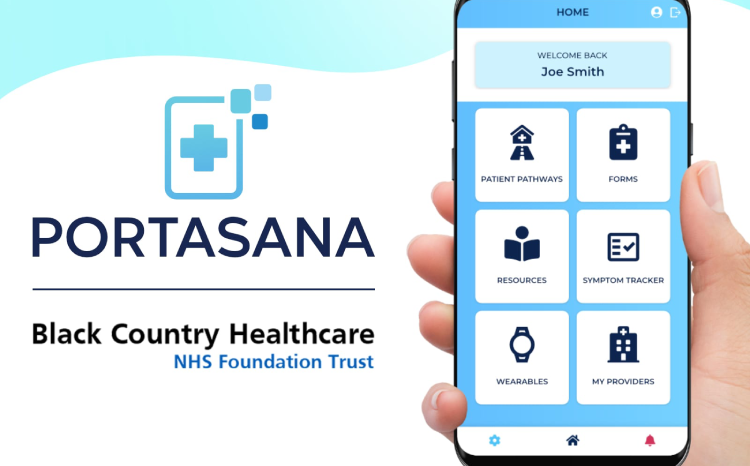Cash injection
- 6 October 2005
 James MacPherson
James MacPherson
GE’s acquisition of IDX for $1.2 billion is just the latest, and most dramatic, sign of how the world’s biggest medical equipment vendors are muscling in to the healthcare IT industry. Four of the industry’s giants are making moves that could transform the e-health market in Europe and America.
There’s a clear line that separates healthcare from medical data in hospitals across the world. Healthcare data runs across conventional software and hardware, like Windows and PCs. Medical systems live within their own, rarefied environments, enjoying their own networks: their data hidden away within their departments, in cardiology, radiology or intensive care.
However, that could all be about to change as the industry’s leaders, giants like GE, the world’s biggest company, or Siemens and Philips, eye up the healthcare IT market. They plan new generations of EHR, workflow and decision support systems. With their huge installed base in medical technology, they plan to abolish the divide between healthcare and medical data. And possibly make all existing e-health vendors obsolescent.
GE
GE’s purchase of IDX is not the only move into e-health the company has made recently. It fits into the company’s wider strategy of developing an entirely new generation EHR announced in February. According to IDX CEO Jim Crook, IDX will give GE a core data repository. This is vital to GE’s EHR development plans.
In February, GE announced that an alliance with Intermountain Health, a Utah-based healthcare provider considered the leading US practitioner of clinical information systems.
With Intermountain, GE plans to build a new generation of EHRs that combine in a single record medical images and data from bedside devices, patient monitors, and lab data. The company says the new system will combine the scope of an EHR with clinical workflow, imaging and clinical data. It envisages all this data being pooled into a central data repository – the missing piece of the jigsaw which GE now gains from IDX. Intermountain will provide the expertise to develop a new generation of decision support tools that will sit on top. To turn this vision into reality, GE is setting up a research centre in Utah with a ten year, $100 million R&D budget.
In July, GE announced that the first product to appear will be a prescription record. This will combine wireless handheld devices with a new pharmacy and patient record system that can check for potential allergies and medication errors at the bedside.
Philips
 Philips, the world’s second largest medical equipment supplier, is also planning a much bigger presence in healthcare IT. For Philips Medical, it would be a return to an old market: the company is now based in Andover, the former home of HP’s medical informatics business, which Philips bought from Agilent after the dot.com crash hobbled the HP spin-out.
Philips, the world’s second largest medical equipment supplier, is also planning a much bigger presence in healthcare IT. For Philips Medical, it would be a return to an old market: the company is now based in Andover, the former home of HP’s medical informatics business, which Philips bought from Agilent after the dot.com crash hobbled the HP spin-out.
The company has over €3 billion to spend on buying up healthcare IT companies, a figure that company boss Gerard Kleisterlee says will be supplemented by share disposals.
At the heart of Philips healthcare IT strategy is its alliance with Epic, the US large-scale EHR vendor. The company has also recently announced the purchase of Stentor, the PACS vendor, which also gives Philips an organisational clinical workflow capability – seen as vital in the world of next generation EHR. Behind these alliances and acquisitions is the goal of integrating EHR with modality systems and networks to produce new, clinical data driven systems.
Siemens
 Not to be left out, Siemens Medical, the world’s third largest medical equipment vendor, is also busy developing an EHR portfolio. It is basing this on its existing Soarian medical imaging and clinical workflow software.
Not to be left out, Siemens Medical, the world’s third largest medical equipment vendor, is also busy developing an EHR portfolio. It is basing this on its existing Soarian medical imaging and clinical workflow software.
Soarian started out life as a way of providing a common, COTS-based platform for viewing and sharing medical images from a number of different modalities. The product of an alliance between Siemens and Microsoft, Soarian also provided clinical workflow capabilities that could integrate easily onto PCs linked to a hospital network.
Siemens has been progressively adding clinical EMRs into Soarian. So for example in 2002, the company launched Soarian Cardiology, providing a specialist EMR designed for cardiac imaging, diagnostics and workflow.
Recently, Siemens has been gearing Soarian up to become a full scale, next generation EHR. It’s intended to combine specialist EMRs with decision support and diagnostics, together with organisational workflow within a large-scale EHR. The company has taken an active role in defining EHR standards within the influential HIMSS industry forum, and it’s also building alliances. A recent one with NextGen has added a “Continuity Care Record” for chronic and elderly care to its e-health line-up.
Agfa
Best known for radiology and PACS, Agfa Gevaert has embarked on an ambitious expansion into healthcare IT. Although not as big as GE, Philips or Siemens, Belgian Agfa says it wants to become the number one healthcare IT company in Europe.
In October last year, it bought French HISS firm, Symphonie On Line for €42 million. This gave the company an installed base across 1200 hospitals and clinics in France. Then in November it paid €350 million for the German EPR and HISS firm GWI. This gave it an installed base of 2000 sites in Germany, Austria and German speaking Switzerland. GWI’s main product is ORBIS: a hospital wide EPR with specialist departmental modules and clinical workflow.
This year, Agfa announced its global healthcare IT strategy. A single platform will form the basis for all future software development. GWI’s ORBIS EPR and workflow system will be combined with Agfa’s existing IMPAX medical imaging software. Agfa says that its new software platform will cover the range of hospital informatics, including medical imaging, clinical information systems and EPR.
Glittering prospects
It’s easy to see why all these companies are now moving into healthcare IT. For starters, there are the prospects of vast contracts as countries around the world launch national EHR programmes. The American programme is the biggest prize: more so since Philips and Siemens have joined GE in regarding the US as home turf. But Europe also presents the prospect of France and Germany’s national programmes, now underway. Siemens, Philips and Agfa still regard Europe, especially Germany, as their own backyard. Germany, with its 80 million population, is likely to dwarf England’s NPfIT in size.
But there’s another reason why each of these companies is so keen to expand into e-health. Each of them is a conglomerate, with problems in other areas of their business. GE faces a slowdown in the defence business. Siemens and Philips have problems with both their electronics and their mobile divisions. Agfa has faced a slowing consumer photography market. Medical equipment represents the bright spot on each company’s balance sheet. Healthcare informatics is an opportunity to expand further into an area that has become each company’s cashcow.
A market sea change
Long term, the entry of major medical equipment vendors like Philips and GE could transform the European e-health market. Their stated intention is to produce clinical EHR systems that go far beyond the products available in today’s marketplace. As world leaders in medical technology, with war chests running into billions of euros, they are well placed to achieve their aims. The result could be to sweep the current generation of EHR vendors off the board.
Even in the short term, their market entry is likely to affect existing vendors. Agfa, the smallest of the four, transformed itself in less than two months into one of the largest healthcare IT vendors in Europe, with a pole position in Europe’s most important national market: Germany. With sales opportunities from a US national health IT programme, the other vendors are likely to make increasingly aggressive moves.
Their multinational, conglomerate structures mean that over time, other vendors will fall by the wayside. As business guru Michael Porter has pointed out, such organisations have a clear advantage over smaller rivals. They can ride out market downturns that would destroy smaller rivals, and are better placed to exploit market upturns. The bottom line is that in the longer term, they will become the dominant players in the global healthcare IT marketplace.




